实验步骤:
我们需要在32位环境下作操作,因此实验之前需要做一些准备
输入命令安装一些用于编译32位C程序的东西:
sudo apt-get update
sudo apt-get install -y lib32z1 libc6-dev-i386 lib32readline6-dev
sudo apt-get install -y python3.6-gdbm gdb
1、Ubuntu 和其他一些 Linux 系统中,使用地址空间随机化来随机堆(heap)和栈(stack)的初始地址,这使得猜测准确的内存地址变得十分困难,而猜测内存地址是缓冲区溢出攻击的关键。因此本次实验中,我们使用以下命令关闭这一功能:
sudo sysctl -w kernel.randomize_va_space=0
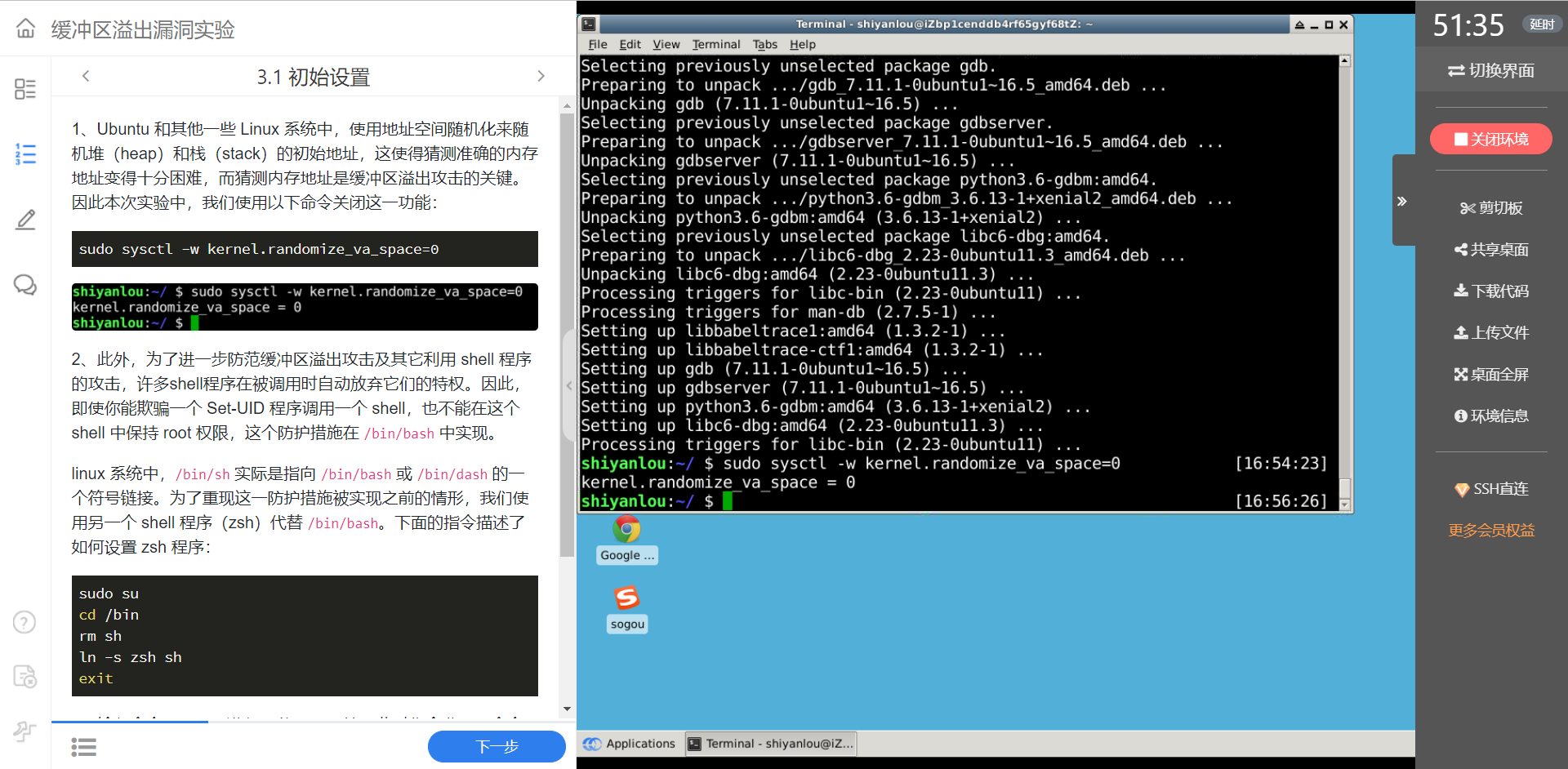
2、此外,为了进一步防范缓冲区溢出攻击及其它利用 shell 程序的攻击,许多shell程序在被调用时自动放弃它们的特权。因此,即使你能欺骗一个 Set-UID 程序调用一个 shell,也不能在这个 shell 中保持 root 权限,这个防护措施在 /bin/bash 中实现。
linux 系统中,/bin/sh 实际是指向 /bin/bash 或 /bin/dash 的一个符号链接。为了重现这一防护措施被实现之前的情形,我们使用另一个 shell 程序(zsh)代替 /bin/bash。下面的指令描述了如何设置 zsh 程序:
sudo su
cd /bin
rm sh
ln -s zsh sh
exit
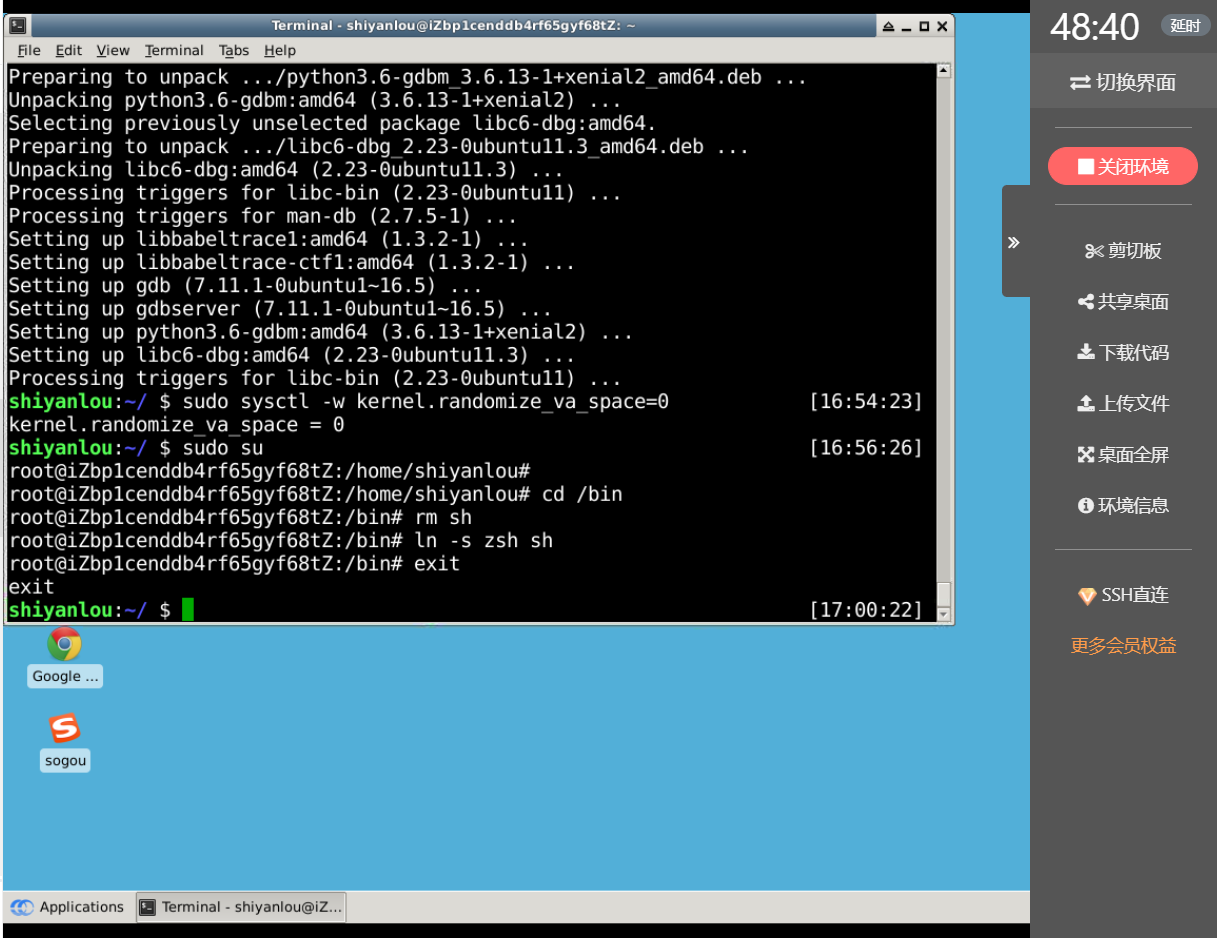
3、输入命令 linux32 进入32位linux环境。此时你会发现,命令行用起来没那么爽了,比如不能tab补全了,输入 /bin/bash 使用bash:

一般情况下,缓冲区溢出会造成程序崩溃,在程序中,溢出的数据覆盖了返回地址。而如果覆盖返回地址的数据是另一个地址,那么程序就会跳转到该地址,如果该地址存放的是一段精心设计的代码用于实现其他功能,这段代码就是 shellcode。
观察以下代码:
在 /tmp 目录下新建一个 stack.c 文件:
按 i 键切换到插入模式,再输入如下内容:
/* stack.c */ /* This program has a buffer overflow vulnerability. */ /* Our task is to exploit this vulnerability */
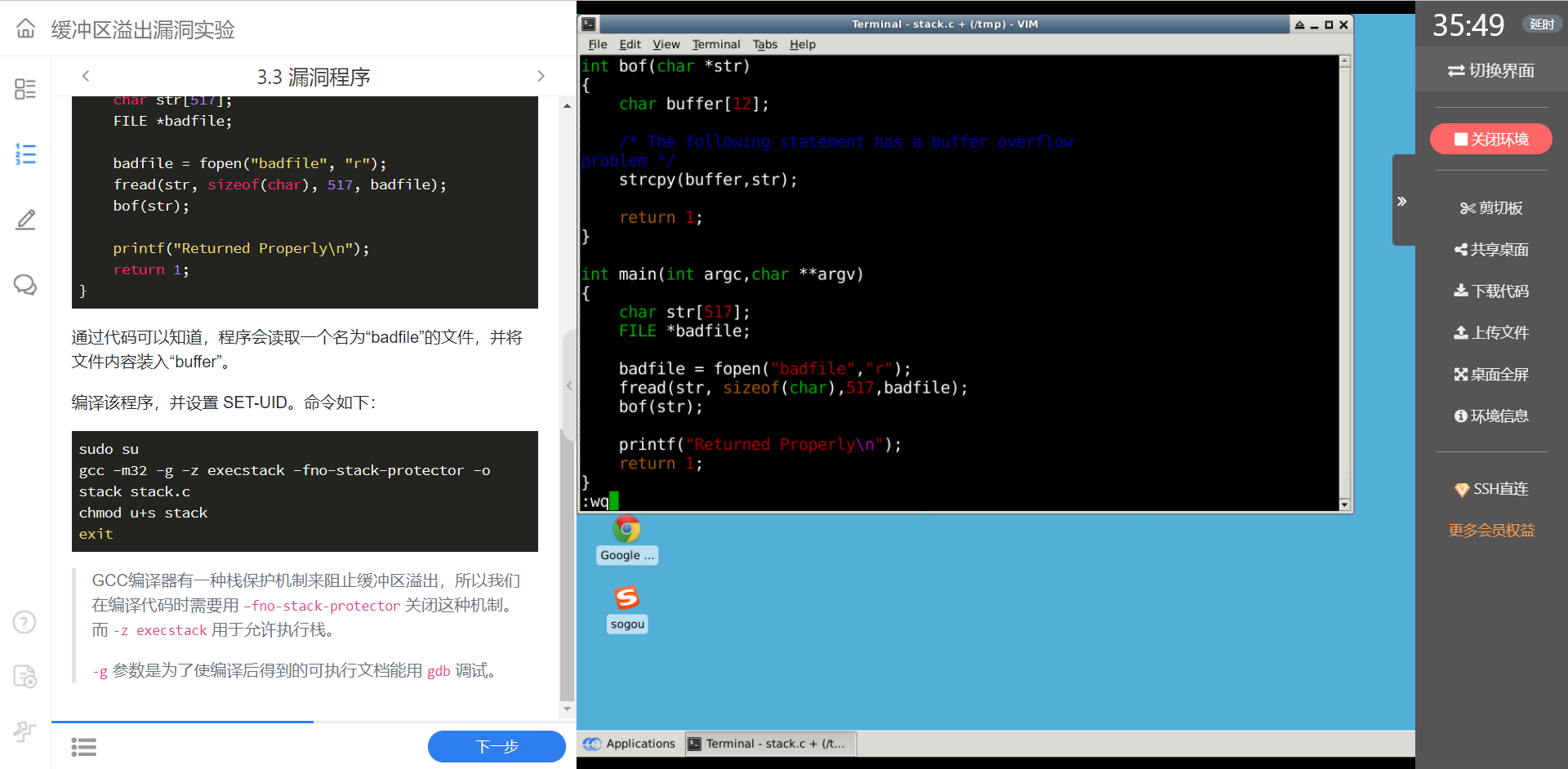
通过代码可以知道,程序会读取一个名为“badfile”的文件,并将文件内容装入“buffer”。
编译该程序,并设置 SET-UID。命令如下:
sudo su gcc -m32 -g -z execstack -fno-stack-protector -o stack stack.c chmod u+s stack exit

GCC编译器有一种栈保护机制来阻止缓冲区溢出,所以我们在编译代码时需要用 –fno-stack-protector 关闭这种机制。 而 -z execstack 用于允许执行栈。
-g 参数是为了使编译后得到的可执行文档能用 gdb 调试。
我们的目的是攻击刚才的漏洞程序,并通过攻击获得 root 权限。
在 /tmp 目录下新建一个 exploit.c 文件,输入如下内容:
/* exploit.c */ /* A program that creates a file containing code for launching shell*/
注意上面的代码,x??x??x??x?? 处需要添上 shellcode 保存在内存中的地址,因为发生溢出后这个位置刚好可以覆盖返回地址。而 strcpy(buffer+100,shellcode); 这一句又告诉我们,shellcode 保存在 buffer + 100 的位置。下面我们将详细介绍如何获得我们需要添加的地址。
现在我们要得到 shellcode 在内存中的地址,输入命令进入 gdb 调试:
gdb stack
disass main
结果如图:

esp 中就是 str 的起始地址,所以我们在地址 0x080484ee 处设置断点。
接下来的操作:

最后获得的这个 0xffffcfb0 就是 str 的地址。
按
q键,再按y键可退出调试。
根据语句 strcpy(buffer + 100,shellcode); 我们计算 shellcode 的地址为 0xffffcfb0 + 0x64 = 0xffffd014
现在修改 exploit.c 文件,将 x??x??x??x?? 修改为计算的结果 x14xd0xffxff,注意顺序是反的。
然后,编译 exploit.c 程序:
先运行攻击程序 exploit,再运行漏洞程序 stack,观察结果:

可见,通过攻击,获得了root 权限!
练习:
通过命令 sudo sysctl -w kernel.randomize_va_space=2 打开系统的地址空间随机化机制,重复用 exploit 程序攻击 stack 程序,观察能否攻击成功,能否获得root权限。
答案:不能获得
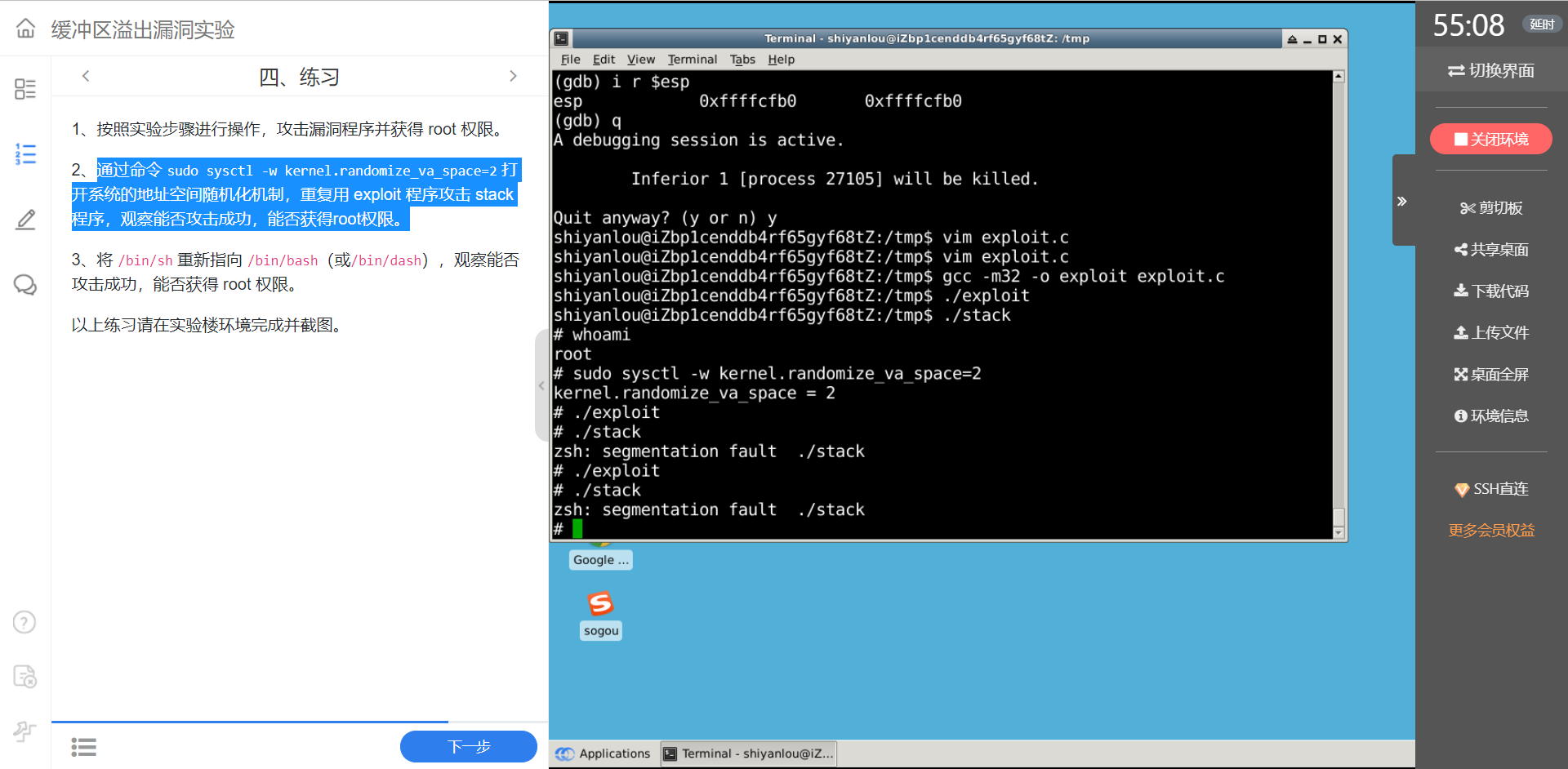
将 /bin/sh 重新指向 /bin/bash(或/bin/dash),观察能否攻击成功,能否获得 root 权限。
答案:不能获得
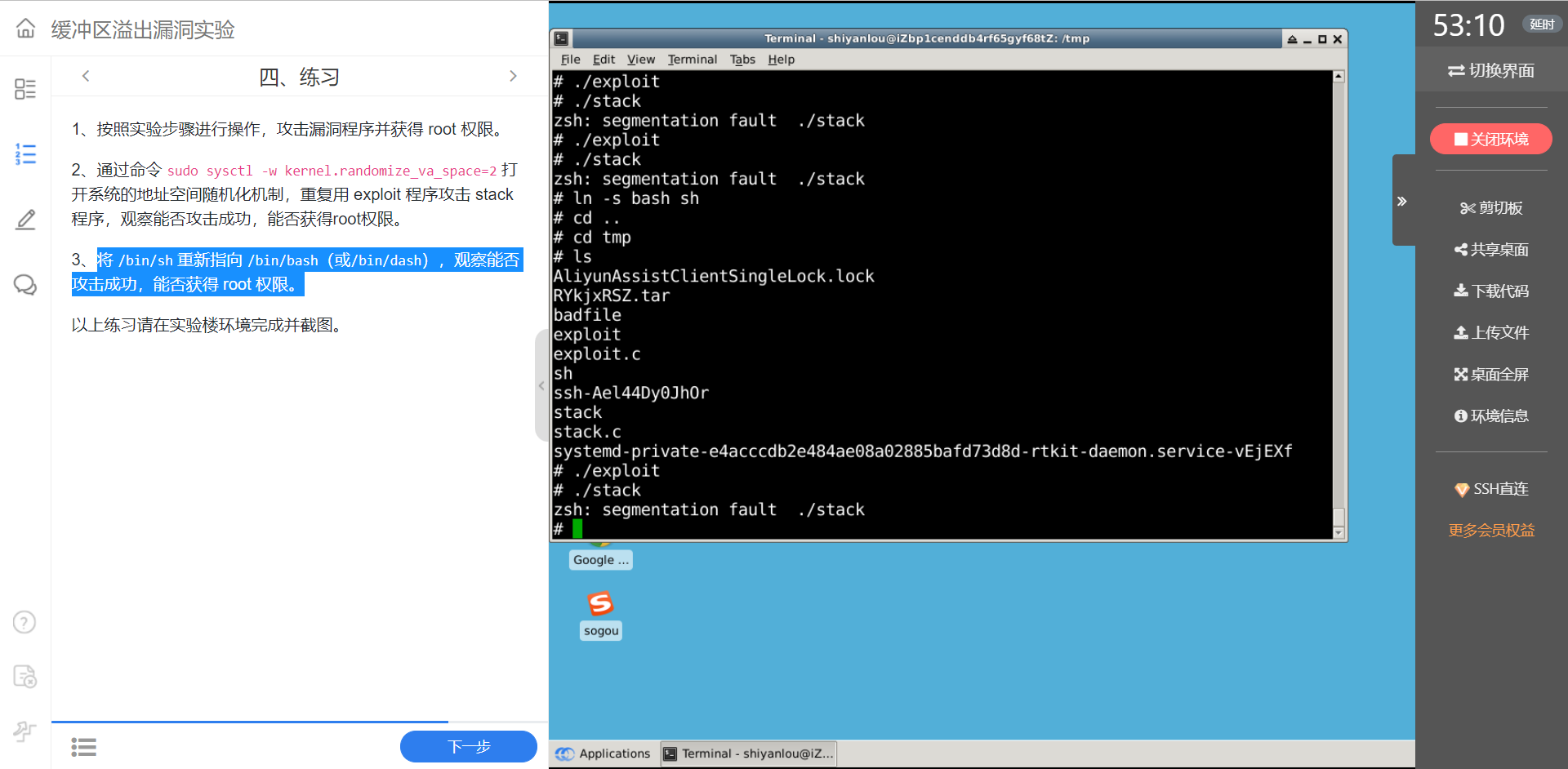
缓冲区溢出概念:缓冲区溢出是指当计算机向缓冲区内填充数据位数时超过了缓冲区本身的容量,溢出的数据覆盖在合法数据上,理想的情况是程序检查数据长度并不允许输入超过缓冲区长度的字符,但是绝大多数程序都会假设数据长度总是与所分配的储存空间相匹配,这就为缓冲区溢出埋下隐患。操作系统所使用的缓冲区又被称为“堆栈”。在各个操作进程之间,指令会被临时储存在“堆栈”当中,“堆栈”也会出现缓冲区溢出。
缓冲区溢出攻击原理:程序员通过往程序的缓冲区写超出其长度的内容,造成缓冲区的溢出,从而破坏程序的堆栈,使程序转而执行其它指令,以达到攻击的目的。造成缓冲区溢出的原因是程序中没有仔细检查用户输入的参数。例如以下程序: